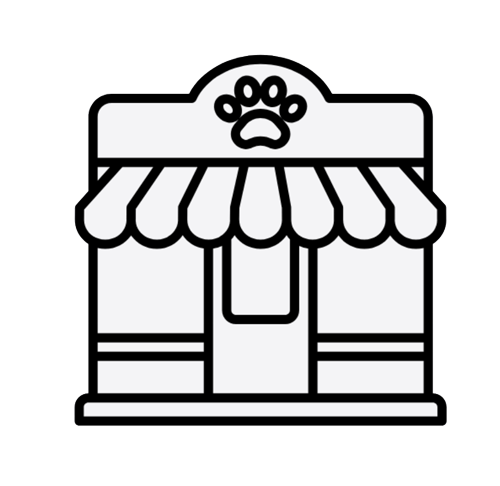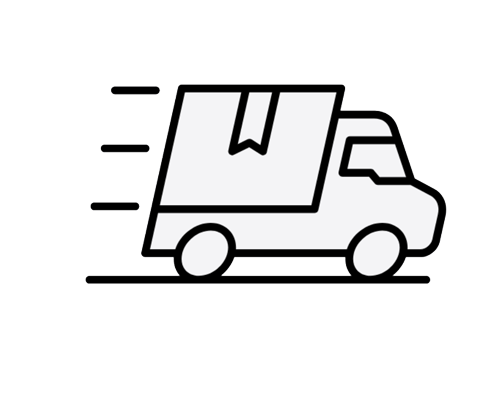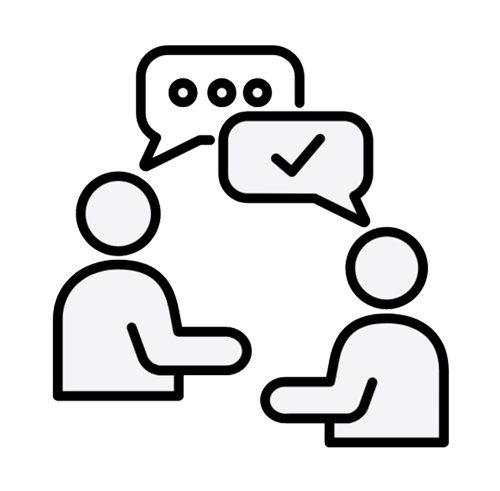Yeast / Candida
What is Yeast?
Yeast (most commonly Malassezia, often referred to as candida) is a normal and healthy part of a dog’s skin and gut microbiome. In a balanced body, yeast exists in small amounts without causing any problems.
However, when the immune system becomes compromised, yeast is opportunistic. It can multiply rapidly, disrupting the normal microbiome and leading to a yeast overgrowth or yeast infection. Some veterinarians may also refer to this as a fungal infection.
Signs of a Yeast Infection in Dogs
Common signs of a yeast infection include:
• Excessive scratching, licking, or chewing
• A strong “yeasty” smell (often compared to corn chips or an unusually strong “doggy” odour)
• Greasy or oily coat
• Skin that feels clammy or sweaty
• Flaking or dandruff
This dandruff is often yeast that has built up in layers on the skin and is shedding or dyeing off.
If left untreated over time, yeast infections can also cause:
• Thickened skin
• Darkened skin pigmentation
• Hair loss
• Chronic inflammation

Image 1: Dog suffering from a yeast infection experiencing inflamed and darkening skin pigmentation, irritation from excessive scratching, and hair loss.
Why Do Yeast Infections Occur?
Yeast infections are rarely the primary issue — they are usually a symptom of an underlying imbalance.
Dogs are more prone to yeast overgrowth when their immune system has been weakened or stressed by:
• Environmental allergies or food intolerances
• Food intolerances
• Gut-disrupting medications
• Immune-suppressing drugs
Other common contributing factors include:
• Hot, humid environments (such as during the wet season in the tropics)
• Diets high in processed carbohydrates
• Antibiotic use without probiotic support
Stress is another often-overlooked factor. Chronic stress disrupts gut flora through hormonal changes, which weakens immune function and increases the risk of yeast overgrowth.
What Makes Yeast Thrive?
Yeast thrives in warm, moist environments and feeds on carbohydrates, starches, and sugars.
Highly processed diets — especially kibble — provide an abundant food source for yeast. All kibble, including grain-free and premium brands, typically contains 50–60% carbohydrates, despite dogs having no essential dietary requirement for carbohydrates.
By comparison, a dog’s natural ancestral diet contained less than 4% carbohydrates, obtained incidentally from plant matter. Feeding large amounts of carbohydrates is unnecessary for dogs and can create ideal conditions for yeast to flourish.
 Image 2: The appearance of yeast and bacteria under a microscope.
Image 2: The appearance of yeast and bacteria under a microscope.
Why Conventional Treatment Falls Short
Conventional veterinary treatment typically focuses on:
• Harsh medicated shampoos
• Pharmaceutical antifungal or steroid medications
• Immune suppressing drug Apoquel
• Cytopoint Injections
While these treatments may reduce symptoms, they often act as a band-aid solution, addressing the surface problem rather than the root cause, which is commonly linked to gut and immune health.
Many dogs end up on long-term medications, leading to recurring flare-ups, potential side effects, financial strain, and frustration for pet parents.
Recommended Treatment Approach
Successful treatment requires a combined internal and topical approach and may take weeks to months, depending on severity and how long the issue has been present.
Consistency and patience are essential.
Internal Treatment (Addressing the Root Cause)
To target yeast at its source — the gut — the following steps are necessary:
1. Add Yeast Plus daily (essential)
Contains herbs and plant-based digestive enzymes to support yeast breakdown.
2. Reduce or eliminate carbohydrates and starches
Feed a nutritionally balanced fresh whole-food diet (commercially prepared or formulated by an animal nutritionist).
If a 100% raw diet isn’t possible:
• Reduce dry food as much as possible
• Remove added carbohydrates such as rice, pasta, bread, and potatoes
• Add as many fresh whole foods as you can.
3. Add virgin coconut oil
Approximately ½ teaspoon per 5 kg of body weight per day. Coconut oil has natural anti-fungal properties. Coconut Oil alone will not kill a yeast infection.
Topical Treatment (Soothing the Skin)
Despite popular belief, shampoos containing oatmeal should be avoided, as the carbohydrates can feed yeast and worsen symptoms.
If you are already using a medicated shampoo such as Mediderm or Malaseb, it can be continued initially. However, a gentler and highly effective alternative is unfiltered apple cider vinegar (ACV) baths.
You can alternate between medicated shampoo and ACV baths weekly if desired.
How to Do an Apple Cider Vinegar (ACV) Bath
- Dilute 1 part raw, unfiltered apple cider vinegar with 1 part filtered water
- Wet your dog with lukewarm water
- Using a clean dish sponge, gently scrub the solution onto the skin - focus on symptomatic areas (usually armpits, groin, neck folds, jowls, and belly)
- Rinse thoroughly
For yeasty paws:
Stand your dog in a shallow container (such as an old ice-cream tub or litter tray) filled with the ACV mixture for a few minutes. Distract them with treats or a Lickimat if needed.
ACV cleans without lather, balances the skin’s pH, and neutralises odour.
For added soothing, you can include 1 cup of brewed and cooled chamomile or green tea (no sugar).
Store the mixture in a glass jar or spray bottle. Bathe once weekly until symptoms improve.
Extra Topical Support for soothing & cooling symptoms
-
Dermal Scratch Spray
Contains aloe vera, vitamin E, and calendula to soothe hot, inflamed skin. Safe to lick and can be applied throughout the day.
Tip: Spray onto your hands and massage in if your dog dislikes sprays. -
For ear infections
NAS Ear Clear is highly effective — check out the reviews!
Want an Easy Starting Point?
Our Yeasty Dog Bundle contains everything you need to begin supporting your dog naturally and effectively.
If not the bundle, the number one most important product to start kicking the yeast is the Yeast Plus (a daily oral powder added to moist meals) which breaks down yeast cells and aids in detoxification.
Preventing Yeast Infections
- Feed a nutritionally balanced fresh whole-food diet
- Reduce kibble as much as possible
- Include raw or lightly cooked whole foods where feasible
- Use a dog-specific multi-strain probiotic, especially after antibiotics
- During long-term or repeated antibiotic use, Saccharomyces boulardii can be given alongside treatment
If yeast is secondary to an environmental allergy or food intolerance, working with a holistic or integrative veterinarian or a qualified animal naturopath is essential to manage the underlying cause.
References
-
Bond, R. (2010). Superficial veterinary mycoses. Clinical Dermatology, 28(2), 226–236. (On Malassezia as normal flora and opportunistic pathogen in dogs)
-
Suchodolski, J. S. (2016). Microbiome in canine and feline gastrointestinal health and disease. Veterinary Clinics of North America: Small Animal Practice, 46(1), 163–176. (On gut dysbiosis, immunity, and fungal overgrowth)
-
Devriese, L. A., & De Cock, H. (1999). Malassezia pachydermatis in dogs: frequency and significance. Journal of Veterinary Medicine, 46(9), 607–612. (On prevalence of yeast in healthy vs diseased dogs)
-
Griffin, C. E. (2001). The diagnosis and treatment of Malassezia dermatitis in dogs and cats. Veterinary Medicine, 96(9), 758–772. (On cytology and diagnosis methods)
-
McKenzie, B. (2017). Evidence review: Apple cider vinegar and pets. Journal of the American Veterinary Medical Association. (On antifungal potential of ACV, limited veterinary evidence)
Disclaimer: Information contained here should not be substituted for advice from a veterinarian or registered animal health care practitioner. The examination, diagnosis and treatment of animals should always be made in consultation with a veterinarian.








